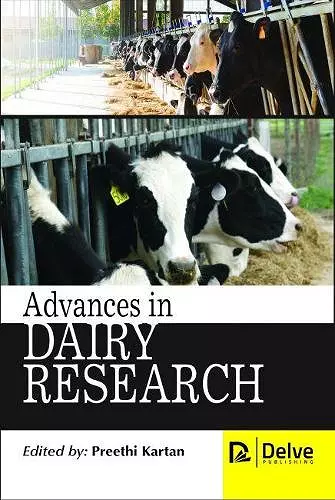Advances in Dairy Research
Format:Hardback
Publisher:Arcler Education Inc
Published:28th Feb '18
Should be back in stock very soon

Milk is an ingredient that is consumed globally. It is the only food that provides a well balanced array of essential nutrients including high-quality protein, fat, carbohydrates, vitamins and minerals (e.g calcium) in the form which is palatable, digestible and sanitary. Milk can be called as whole meal and “perfect food”, contributing dietary energy requirements for vegetarians. The major milk proteins are the caseins and whey proteins and carbohydrate component is lactose.
It is predicted that milk consumption is ought to increase globally in the coming years in line with the increasing world population, and there exist a better return potential to provide milk and milk products for human consumption.
The broad range of nutritional content and high moisture creates a favorable environment for the growth of microorganisms in milk and its products. Microbes can enter milk via the cow, air, feeds, milk handling equipment and milker. The most common method of milk preservation is boiling. For large scale consumption, milk is pasteurized before refrigeration at low temperature. Pasteurization is heating of milk or other dairy products to a temperature of 62OC for 30 minutes or to at least 71oC for 15 second which destroys all the pathogenic microorganisms without seriously affecting the composition of milk. However, protein denaturation is one of the negative side effects of pasteurization which persuaded to develop non thermal technologies for the reduction microbial load without changing the protein and nutritional content.
Various fermented and non fermented dairy products are readily available in the market and high in demand from the consumers like Cheese, yogurt, yakult etc. Dairy starter cultures are actively growing cultures of Lactic acid bacteria (LAB) to carry out these fermentation processes. LAB starters are primarily used because of their capability to produce lactic acid from lactose. Lactic acid bacteria make the specific end-products that impart flavor and modify the texture of the final product.
Cheese is the most widely consumed diary product in the world. Enzyme, chymosin can specifically break down milk ?-casein to form insoluble para-?-casein, resulting in milk coagulation, a process that is used in making cheese.
Phage sensitivity of lactic cultures constitutes a critical issue in dairy production, when the starters are selected for industrial use. Many strategies...
ISBN: 9781773611129
Dimensions: unknown
Weight: unknown
307 pages